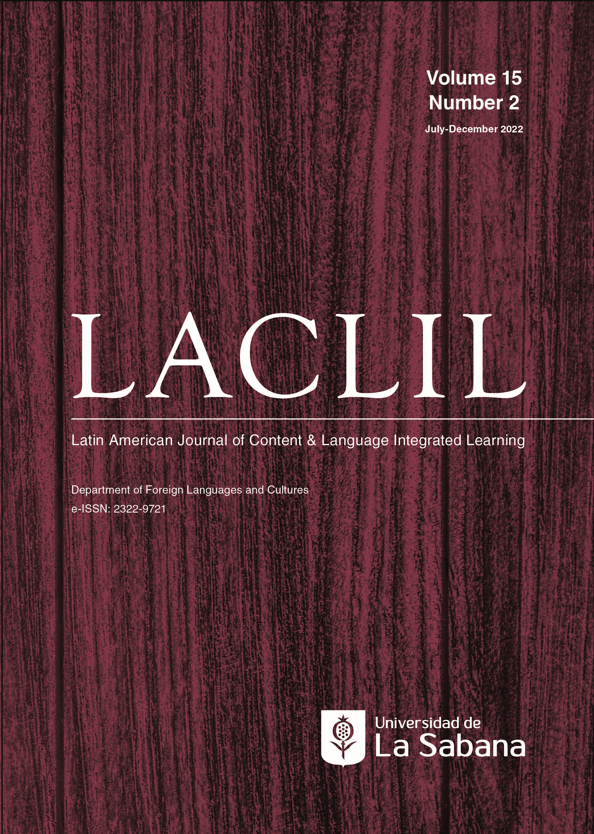Making emotions count through CLIL
DOI:
https://doi.org/10.5294/laclil.2022.15.2.1Keywords:
learning process, emotions, CLIL, strategies, positive mindset, experiences, learnersAbstract
In this article, we consider the importance of learner well-being for a better performance during the learning process, taking into account their emotions and how they affect them. The CLIL approach is used to integrate learners’ language knowledge and provides strategies about how to manage their emotions and develop a positive mindset. In this context, we suggest three meaningful activities for teenage learners to identify and analyze their emotions while learning and encourage their critical thinking, creativity, and collaborative work. Furthermore, learners can learn about how emotions affect not only their school, but also their personal lives. Through these proposed activities, students may develop some tools and pieces of advice to take care of their emotional health.
Downloads
References
Barrios, G. G. (2018). La regulación emocional en relación con el rendimiento académico y la ansiedad en los cursos de lectocomprensión de Inglés. [Dissertation, Universidad Nacional de Córdoba].
Bentley, K. (2010). The TKT course CLIL module. Cambridge University Press.
Cherry, K. (2022). “5 Reasons Emotions Are Important”. Verywell mind. https://www.verywellmind.com/the-purpose-of-emotions-2795181.
Coyle, D., Hood, D., & Marsh, D. (2010). CLIL: Content and language integrated learning. Cambridge University Press.
Darn, S. (2009). Content and Language Integrated Learning. British Council. https://www.teachingenglish.org.uk/article/content-and-language-integrated-learning.
KnowledgeOne. (2022m June 8). The importance of emotions in learning [Video]. YouTube. https://www.youtube.com/watch?v=eqSoWurDLio.
Rodriguez-Ruiz, C. (2019). Fichas didácticas. Educa y aprende. www.educayaprende.com.
Seikkula-Leino, J. (2007). “CLIL learning: Achievement levels and affective factors”. Language and education, volume 21.
Downloads
Published
How to Cite
Issue
Section
License
Copyright (c) 2023 Latin American Journal of Content & Language Integrated Learning

This work is licensed under a Creative Commons Attribution-NonCommercial-NoDerivatives 4.0 International License.
This Journal and its articles are published under the Creative Commons CC BY 4.0 DEED Attribution 4.0 International license. You are free to: Share — copy and redistribute the material in any medium or format for any purpose, even commercially. Adapt — remix, transform, and build upon the material for any purpose, even commercially. The license cannot revoke these freedoms as long as you follow the terms of the license.








